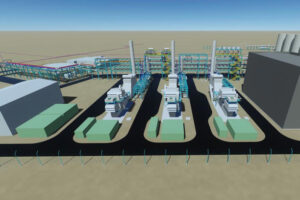Robin Hood Energy – the drive to break even
As one of the leading council-owned energy companies in the country, Robin Hood Energy is under intense scrutiny in local government and energy circles alike.
The company was launched by Nottingham City Council in 2015 to other cheaper electricity tariffs to customers across the country and posted a loss of £7.6m for the year to end March 2017.
 Environment Journal spoke to the chair of Robin Hood Energy’s board, Cllr Steve Battlemuch (pictured), about how the company is progressing and how it aims to break even by March this year.
Environment Journal spoke to the chair of Robin Hood Energy’s board, Cllr Steve Battlemuch (pictured), about how the company is progressing and how it aims to break even by March this year.
The last time Environment Journal spoke to Robin Hood Energy was in October 2016 and the company had then around 50,000 customers. Can you update us on how many customers the company now has?
We currently have around 118,000 customers, which equates to around 187,000 supply points.
How is the company currently performing, financially and do you have any idea when it is likely to make a profit?
We are on track to reach break-even at the end of March 2018.
How important are ‘white label’ contracts with other local authorities for Robin Hood Energy?
Our white label partners are very important to us. They allow the Robin Hood Energy ethos and mission of tackling fuel poverty to be spread across the country. We see Robin Hood Energy as a ‘movement’, formed to give fairer energy pricing and an ethical alternative to the ‘big six’. Our white label partners share that vision and help us promote it in their local areas.
There has been a proliferation of smaller, independent energy suppliers in recent years, how confident are you that Robin Hood Energy can compete in a crowded market place?
We’re all for the smaller independent suppliers. The ‘big six’ monopolised the industry for such a long time that they pretty much made the rules up themselves. The introduction of more suppliers has made the market more competitive and ultimately given customers more choice and better prices. We have a different offering from most suppliers though. We’re not-for-profit and we’re owned by Nottingham City Council. These things give people, not only from Nottingham, but across the country, a great sense of pride that they’re supporting something that was set up to make a difference.
Do you see the introduction of an energy price cap having an impact on the business?
Of course there will be an impact on all suppliers, not just us. We welcome a price cap on standard variable tariffs (SVTs). We also agreed with the recommendation from the CMA, that households that have been on a SVT for more than three years, should be put on a ‘marketing database’. Over a third of households are on a SVT so this would definitely deliver huge savings and encourage customers to switch.
The number of people switching suppliers increased during 2017 to record levels. What can be done to encourage those who are not engaged to think about changing supplier?
We work very hard to encourage people to switch. If [you are] not switching to Robin Hood Energy, at least have a look at what’s out there and see if you can save. The number of people switching is down to awareness. People are becoming more educated when it comes to energy and have a better understanding that by switching, they could potentially save.
Has Robin Hood Energy got any plans to launch new products in 2018?
We’re constantly looking at new ways to help tackle fuel poverty, predominantly through offering better tariffs. Our 18-month Peace of Mind tariff lets people fix their prices for the next 18 months and give them the reassurance that regardless of what happens in the market, their prices are secured. As for entering other markets or offering new products or services, you’ll have to watch this space!















